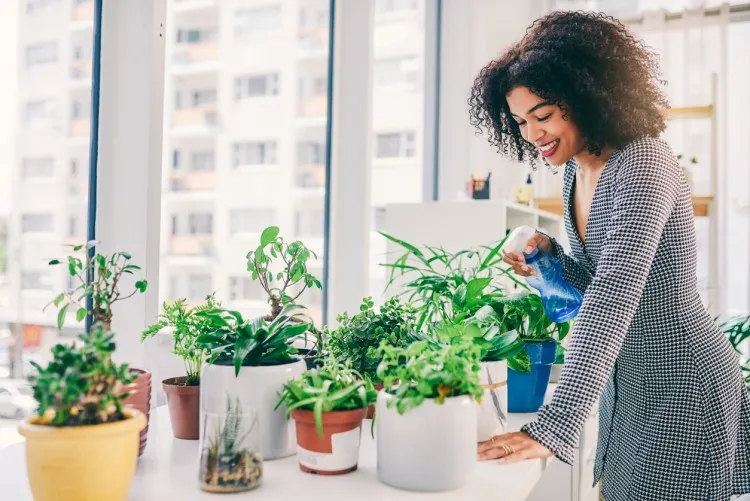Feeling stressed and overwhelmed? You’re not alone. Stress can weigh heavy on our lives, impacting our mental and physical well-being. While plenty of methods exist to manage distress, a natural and simple solution has been gaining attention: plants. Green therapy, or using plants and nature to improve health, is not just a trend but a proven way to bring calmness to our lives. Here’s how plants can help relieve stress and how you can make this therapy part of your routine.
The Connection Between Plants and Human Well-Being
Plants have an incredible way of improving mood and fostering feelings of relaxation. Why is this? For starters, humans have an innate connection to nature. Known as biophilia, this concept suggests that our love for natural elements stems from our evolutionary history of living in natural environments. This connection helps explain why even a brief interaction with plants can lift our spirits.
Studies show that being in the presence of greenery can reduce cortisol levels, which is the hormone linked to stress. Whether outdoor gardens or indoor potted plants, surrounding yourself with nature can provide a sense of calm and purpose during chaotic times.
Psychological Benefits of Green Therapy
Reduced Anxiety and Stress
One of the most celebrated benefits of green therapy is its ability to reduce anxiety. Engaging with plants, such as gardening or even tending to a small succulent on your desk, can act as a form of mindfulness. Being present at the moment when watering, pruning, or planting helps distract your mind from stressors and decreases overthinking.
Additionally, natural environments stimulate the parasympathetic nervous system, which promotes relaxation. Even looking at greenery through a window can bring a sense of peace.
Boosted Mood and Mental Clarity
The vibrant greens and textures of plants have been found to improve mood. Placing plants in your living space can transform stark, clinical environments into warm, inviting areas full of life. Plants also help boost creativity and focus, an added benefit if you work from home or study.
Plant-related activities, like tending a small herb garden or arranging flowers, offer a creative outlet to lift spirits and ward off negative emotions.
Physiological Effects of Plants
Cleaner Air, Better Breathing
Plants don’t just look good; they also improve the air quality around you. Many plants act as natural air purifiers, filtering harmful toxins and releasing oxygen. Cleaner air reduces physical tension, headaches, and fatigue from poor indoor air quality.
Varieties like peace lilies and spider plants are particularly praised for their air-cleaning properties. Breathing in cleaner air leads to a healthier respiratory system and, by extension, less physical stress.
Slower Heart Rate and Lower Blood Pressure
Being around plants does more than just clear your mind. Studies indicate that exposure to natural settings can slow your heart rate and decrease blood pressure. These physical responses to greenery further show plants’ undeniable impact on stress relief. Whether walking in a forest or sitting near a leafy fern, nature works its calming magic on your body.
How to Incorporate Green Therapy Into Your Life
Green therapy isn’t something that requires a large investment or commitment. Here are some practical ways to weave the benefits of plants into your daily routine:
1. Start Small with Indoor Plants
If you’re new to houseplants, start with easy-to-care-for varieties like aloe vera, pothos, or snake plants. These require minimal attention but offer maximum aesthetic and psychological benefits.
2. Create an Outdoor Retreat
If you can access outdoor space, use it to create a small green sanctuary. Add some flower pots, shrubs, or even a vegetable patch. Spending time tending an outdoor garden helps you reconnect with nature in a fulfilling way. If you’re unsure where to begin, visiting a garden shop in Salt Lake City can offer great ideas and expert advice tailored to your needs.
3. Integrate Plants Into Your Workspace
For many people, work is a source of stress. Add a splash of green to your desk to make your workspace feel more serene. Small plants like succulents or tiny ferns reduce stress in high-pressure environments.
4. Take Advantage of Public Green Spaces
If you don’t have space for personal plants, take regular walks in nearby parks or botanical gardens. Immersing yourself in a natural setting, even briefly, can freshen your outlook and alleviate tension.
Conclusion
Green therapy offers a simple yet highly effective way to combat stress naturally. Plants enhance our environment and provide measurable improvements to our mental and physical health. By introducing even small greenery elements into your daily life, you can create pockets of calm amidst the chaos. Whether through indoor plants, outdoor gardening, or nature walks, consider harnessing the power of green therapy to nurture your mind and body.

